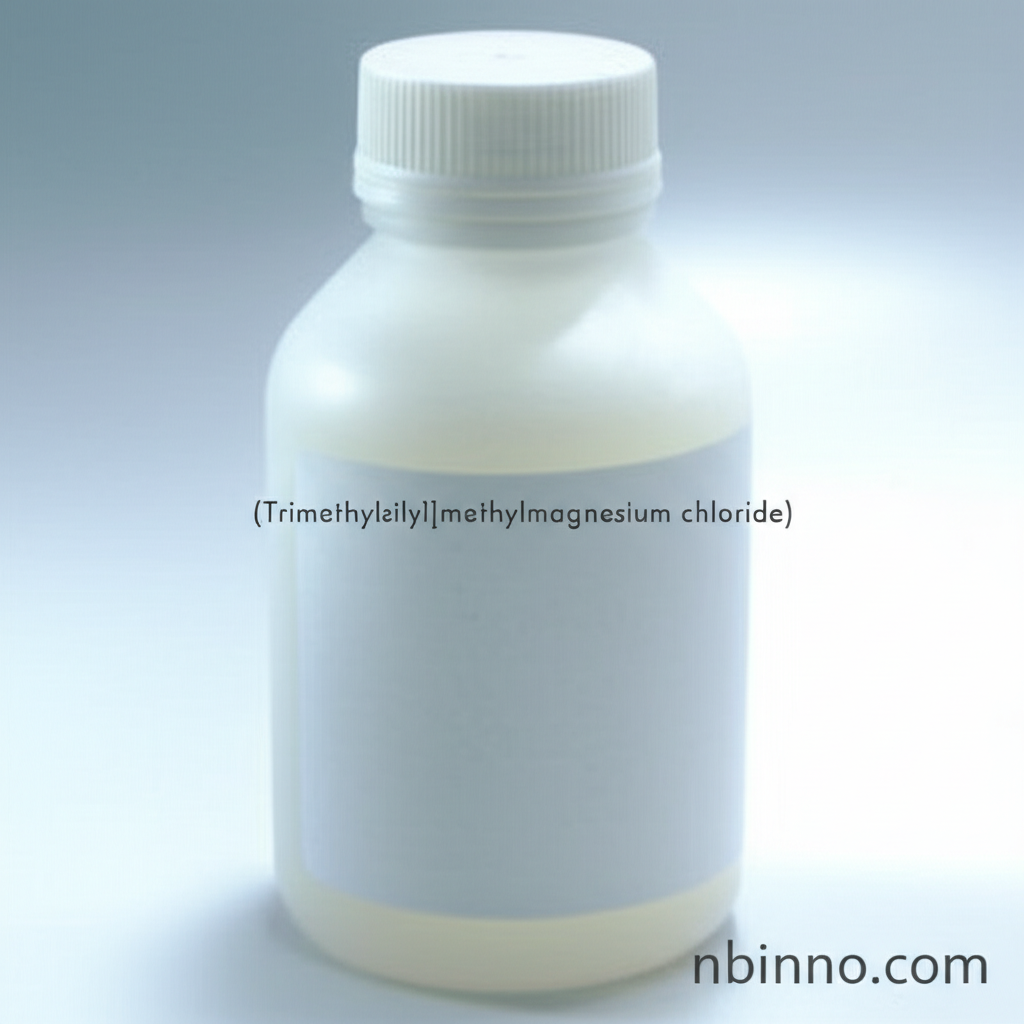(Trimethylsilyl)methylmagnesium Chloride: A Versatile Grignard Reagent for Organic Synthesis
Explore the power of (Trimethylsilyl)methylmagnesium chloride, a key organometallic compound revolutionizing organic synthesis. Discover its applications in catalysis, protecting group chemistry, and C-C bond formation, making it an indispensable tool for chemists worldwide. Learn why it's a preferred choice for innovative chemical reactions.
Get a Quote & SampleProduct Core Value

(Trimethylsilyl)methylmagnesium chloride
As a leading supplier in China, we offer (Trimethylsilyl)methylmagnesium chloride (CAS 13170-43-9), a crucial organometallic reagent vital for various synthetic transformations. Its unique structure, featuring both a Grignard moiety and a trimethylsilyl group, allows for precise control in forming carbon-carbon bonds and as a precursor in complex synthetic pathways.
- Unlock advanced synthesis possibilities with this Grignard reagent, facilitating reactions like alkenation of dithioacetals and cross-coupling with aryl triflates.
- Enhance your chemical processes by utilizing (Trimethylsilyl)methylmagnesium chloride for protecting group strategies, ensuring selective reactions in complex molecule synthesis.
- Leverage its utility in nickel-catalyzed reactions, a key aspect of modern organic synthesis for creating intricate molecular structures.
- As a reliable manufacturer in China, we ensure consistent quality and availability of this essential chemical intermediate for your research and industrial needs.
Advantages
Versatile Reactivity
This compound's bifunctional nature allows for a wide range of chemical transformations, making it a highly versatile tool in organic synthesis and a key element in understanding Grignard reagent applications in synthesis.
Precise Control
The trimethylsilyl group offers steric hindrance and electronic effects, enabling chemists to achieve greater selectivity and control in complex synthetic routes, a critical factor when exploring protecting group chemistry in synthesis.
Catalytic Efficiency
Its role in nickel-catalyzed reactions highlights its importance in modern chemistry, contributing to efficient and innovative methods for molecule construction, essential for nickel catalyzed reactions reagent advancements.
Key Applications
Organic Synthesis
A cornerstone reagent for forming new carbon-carbon bonds and functionalizing molecules, crucial for developing novel compounds in medicinal chemistry and materials science, aiding in achieving precise Grignard reagent synthesis.
Catalysis
Serves as a critical component or precursor in various metal-catalyzed reactions, especially those involving nickel, enabling efficient and selective transformations in the field of organosilicon compounds in organic chemistry.
Protecting Groups
The trimethylsilyl group can be used to protect sensitive functional groups during multi-step syntheses, showcasing its importance in protecting group chemistry in synthesis.
Chemical Intermediates
Acts as a valuable intermediate for synthesizing more complex organosilicon compounds and other specialty chemicals, supporting innovation in various chemical industries.
